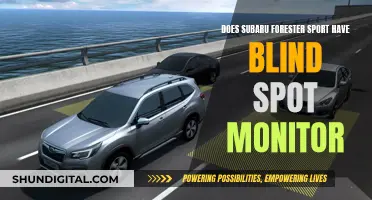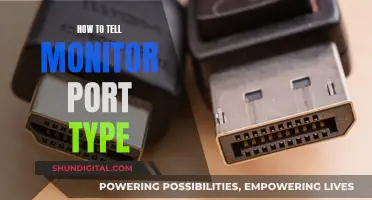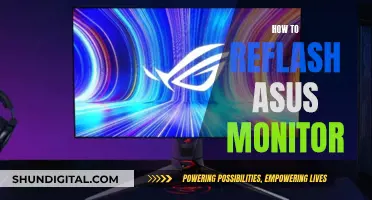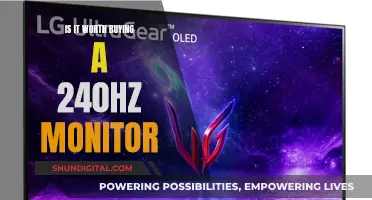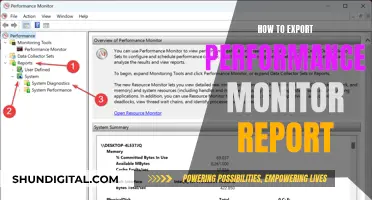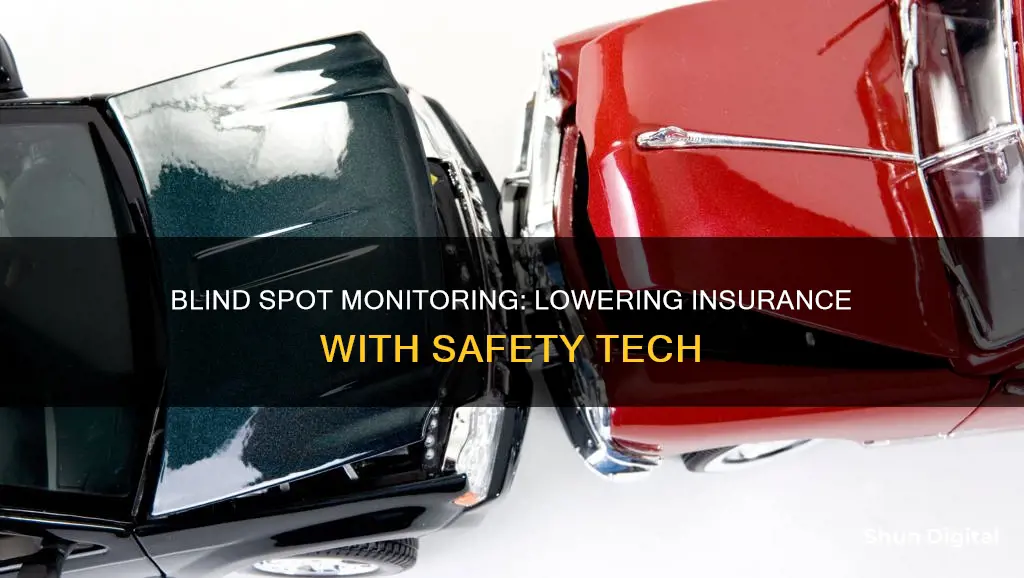
Blind spot monitoring and cross-traffic alert systems are modern safety features designed to assist drivers and reduce accidents. Blind-spot monitoring systems use ultrasonic sensors or radar to detect vehicles in a car's blind spots, while cross-traffic alerts use similar technology to monitor for traffic when reversing. These systems are particularly useful for larger vehicles with poor rear visibility and can help prevent accidents when changing lanes or backing out of parking spaces. While these safety features do not currently lower insurance premiums due to their high cost of repair and replacement, evidence suggests that they can effectively reduce accidents and insurance claims. As the technology becomes more affordable, insurance companies may begin to offer discounts for vehicles equipped with these features.
| Characteristics | Values |
|---|---|
| Effectiveness in preventing collisions | Blind spot monitoring and cross traffic alert systems are effective in preventing collisions and reducing the risk of human error while driving. |
| Cost | These safety systems are currently expensive to repair or replace if they malfunction or break. |
| Insurance impact | Blind spot monitoring and cross traffic alert systems do not currently offer a direct insurance discount. However, they can help lower insurance costs over time by helping drivers avoid accidents that would otherwise increase their rates. |
| Safety benefits | These systems can provide warnings when a vehicle enters the blind spot zone and help detect traffic when backing out of a parking space or driveway. |
What You'll Learn

Blind-spot monitoring systems are a common driver aid technology
These systems use ultrasonic sensors or radar sensors on the car's flanks to detect vehicles in your blind spots. When a car enters your blind spot, you are alerted with a notification light on or near the side mirror on the appropriate side of the vehicle. Some systems also provide an audible beep or tone when you activate your turn signal while the system is triggered.
More advanced versions of this technology, such as Lane Change Assist by Hyundai, extend the range of the side sensors to three to five car lengths back and monitor the speed of oncoming vehicles. This allows the system to predict if a car will enter your blind spot before it happens.
Blind-spot monitoring systems are particularly useful for large trucks and SUVs with long tail ends and poor rear visibility. They can also be paired with rear cross-traffic alert systems, which use the same sensors to monitor the blind spots of your car for traffic at low speeds when reversing.
While blind-spot monitoring systems do not currently lower insurance rates, there is evidence that they help prevent accidents. An Insurance Institute for Highway Safety study found that vehicles with these systems were 14% less likely to be involved in a crash and 23% less likely to be involved in a collision resulting in injuries. As more research supports these findings and the technology becomes more affordable, insurance companies may start offering discounts for vehicles equipped with these safety features.
Finding Mates: The Asian Water Monitor's Unique Strategies
You may want to see also

Rear cross-traffic alerts use ultrasonic sensors to monitor blind spots
Rear cross-traffic alerts are a useful safety feature that can help drivers with the hazardous task of reversing in a crowded parking lot. When backing up, your view may be blocked by other vehicles or obstructions, making the blind spot over your shoulder even larger. This is where rear cross-traffic alerts come in, using ultrasonic sensors to monitor these blind spots for traffic.
Ultrasonic sensors, located on the flanks of the car, detect when a car enters the blind spots on either side of the vehicle. These sensors are usually placed at the rear of the car, near the bumper, and they look like small buttons. The system will then provide a warning light and/or a warning sound to alert the driver of the potential hazard. In some cars, like those made by General Motors, haptic feedback is used to vibrate the driver's seat and grab their attention.
It is important to note that rear cross-traffic alerts are not designed to detect small motorcycles, bicycles, or pedestrians. They may also fail to detect vehicles that are approaching directly from behind or moving away from the vehicle. Additionally, they tend to work best when reversing in a straight line, rather than at an angle.
While these systems are not a replacement for checking over your shoulder, they can provide valuable assistance and help prevent accidents. In fact, research has shown that vehicles with blind-spot monitoring systems, which often include rear cross-traffic alerts, are 14% less likely to be involved in any crash and 23% less likely to be involved in a collision resulting in injuries.
Despite the safety benefits, insurance companies may not offer discounts for these features due to the high cost of repairing or replacing the sensors if they malfunction or break. However, even without a discount, these safety features can still make your insurance cheaper over time by helping you maintain a good driving record and avoid accidents that would otherwise increase your rates.
Connecting HP EliteBook to a Monitor: A Step-by-Step Guide
You may want to see also

RCTA alerts are often paired with back-up cameras
Rear Cross Traffic Alert (RCTA) is a driver assistance feature that uses radar sensors or cameras mounted on the rear of a vehicle to detect approaching traffic from the side when the vehicle is in reverse. When an object is detected, the system alerts the driver with a visual and/or audible warning. This technology is particularly useful when backing out of a driveway or parking space that may be obscured by bushes, fences, or another car.
When an RCTA system detects an approaching vehicle, it typically alerts the driver through visual indicators in the side mirrors, a display on the centre console screen, and/or an audible chime or verbal warning. Some more advanced systems may also show the distance and direction of the approaching object on the centre display.
The radar sensors used for RCTA are often shared with a vehicle's Blind Spot Monitoring (BSM) system. This allows the vehicle to detect objects in the blind spot zone and alert the driver accordingly.
While RCTA provides valuable assistance, it is important to note that it is a supplemental safety feature and should not replace attentive driving and physical checks of the surroundings. Drivers should still use their mirrors, rear-view camera, and look behind the vehicle before reversing.
Old Monitors: Why People Still Buy Them
You may want to see also

RCTA alerts can be auditory or visual
Rear Cross Traffic Alert (RCTA) systems are designed to warn drivers of vehicles or pedestrians entering their path when reversing. RCTA alerts can be auditory or visual, or both.
When a vehicle or person enters the driver's blind spot, an RCTA system will typically emit a beeping noise to alert the driver. This is accompanied by a flashing light on the dashboard or side mirrors, or both. Some RCTA systems also use a seat rumble feature to alert the driver.
RCTA systems are especially useful when backing out of a driveway or parking space where visibility is limited. They can detect oncoming traffic or pedestrians that the driver might not be able to see, providing an extra set of eyes and helping to prevent accidents.
While RCTA systems use radar technology to detect objects, they do have some limitations. For example, they may not work effectively in angled parking spots or enclosed spaces. It's important for drivers to understand the limitations of RCTA and use it as a supplementary aid to safe driving practices, rather than relying on it solely.
In addition to RCTA, some vehicles are also equipped with Blind Spot Monitoring (BSM) systems. BSM uses radar sensors to monitor the driver's blind spot and provide visual or auditory alerts when a vehicle is detected. BSM and RCTA often work together to enhance the driver's awareness of their surroundings.
Easy Ways to Check if Your Monitor has HDR
You may want to see also

RCTA alerts are not designed to detect small vehicles or pedestrians
Rear Cross Traffic Alert (RCTA) is an advanced driver assistance system (ADAS) that makes reversing out of parking spots safer by warning drivers of crossing traffic they might not be able to see. RCTA alerts are triggered when a vehicle enters the car's radar detection area, which extends out from each radar sensor in the vehicle's rear corners and down the length of the aisle, in both directions.
While RCTA systems are designed to detect vehicles approaching from the sides, they may not detect cars behind you when parking spaces are angled, or pedestrians. This is because RCTA sensors have a large detection field that extends to the sides of your vehicle, allowing them to pick up cross traffic. However, since the sensors are located on the corners of the vehicle, they may not be able to detect small vehicles or pedestrians directly behind the car.
In addition, RCTA systems typically only work when the car is backing out of a straight parking spot or driveway and do not function in angled parking spaces. Therefore, it is important for drivers to understand the limitations of RCTA and other similar backing aids and not rely on them completely. Drivers should always physically check behind the car before backing up, as well as turn their heads and check their surroundings as they begin to move.
Hooking Up a Monitor Wirelessly: Easy Steps to Success
You may want to see also
Frequently asked questions
Blind spot monitoring and cross-traffic alert systems use ultrasonic sensors or radar to detect vehicles in a driver's blind spot. They are designed to supplement, not replace, a driver's own observations.
When a vehicle enters your blind spot, you are alerted with an indicator light and/or an audible warning. Cross-traffic alerts work in a similar way when reversing out of a parking space or driveway.
The answer is complicated. While these systems can reduce accidents and insurance claims, they are also expensive to repair or replace if they malfunction. Insurance companies need more time to understand the connection between these systems and insurance claims.
Winter tires, anti-theft systems, and dash cams can all help lower insurance costs.
The type of vehicle, its safety rating, and its likelihood of being stolen are all factors that affect insurance costs.


